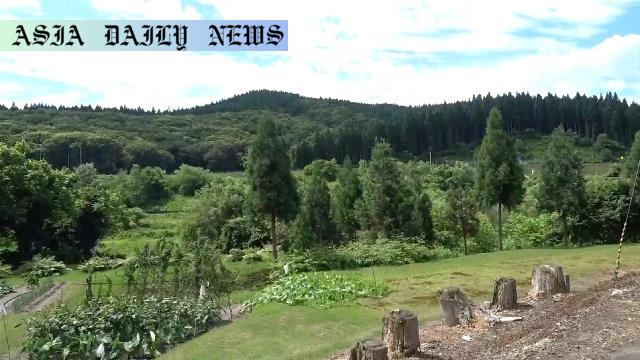Bear Attack: A 75-year-old man survived a wild bear attack in Akita Prefecture, sustaining non-life-threatening injuries.
A 75-year-old man was attacked by a bear in Kitaakita City, Akita.
He sustained non-life-threatening injuries requiring two months to heal.
This incident marks the third bear attack in Akita this year, amid rising bear sightings.
An Asian black bear alert is active across Akita to ensure public safety.

Introduction: Rising Bear Encounters in Akita
In recent months, Akita Prefecture, located in northern Japan, has been grappling with an uptick in wild bear incidents. The latest encountered involved a 75-year-old man who was attacked while working alone in a farming field early Monday morning in Kitaakita City. Despite the severity of the encounter, the man managed to return home, where his family immediately called emergency services. He was treated for head injuries that, while not life-threatening, are estimated to require two months of recovery.
Details of the Incident
The bear responsible for the attack is described as an Asian black bear standing approximately 1.5 meters tall. Police officials reported that the bear approached the man from behind before launching the attack, subsequently fleeing the scene. This marks the third such attack in Akita Prefecture since the beginning of the year. As incidences of wildlife aggression continue to climb, this latest encounter serves as a dire reminder of the risks faced by residents in the area.
Spike in Bear Sightings and Public Alerts
Since July, Akita has witnessed a dramatic surge in reported bear sightings, tallying over 650 cases. This figure represents a nearly threefold increase compared to the same timeframe from the previous year. The sharp rise has prompted local authorities to issue an Asian black bear alert across the prefecture and has brought attention to the broader issue of human-bear interactions in rural Japan. Experts cite various reasons for the increase in bear visibility, including habitat encroachment, food scarcity, and changes in bear behavior due to climate fluctuations.
Safety Measures and Recommendations
Authorities are urging residents to exercise caution, particularly those engaged in outdoor activities such as farming, hiking, or forestry work. Recommendations include carrying bear spray, creating noise to avoid surprising bears, and traveling in groups whenever possible. Basic education on bear behavior and appropriate response tactics can also greatly contribute to safety. Residents are also encouraged to report sightings promptly to local wildlife organizations to enable swift response teams to handle the situation effectively.
Conclusion: Balancing Coexistence and Safety
While the rise in bear attacks and sightings is alarming, it highlights a growing need to revisit human-wildlife coexistence strategies in regions like Akita. The prefecture’s dense forests and rural landscapes are home to diverse wildlife, including the Asian black bear. Ensuring safety for both humans and animals requires collaboration among communities, authorities, and wildlife experts. Enhanced public awareness, preventive measures, and effective wildlife management policies will be crucial in addressing this complex issue. As Akita continues to adapt to these challenges, this incident serves as a wake-up call for both vigilance and proactive measures in the face of an evolving ecological landscape.



Commentary
Reflecting on the Severity of Bear Attacks
The recent bear attack in Akita Prefecture is a stark reminder of how human activities and wildlife habitats often intersect in unexpected ways. The victim’s ability to return home despite sustaining injuries demonstrates a remarkable resilience, but it also underlines the serious risks residents face as these incidents become more frequent. Attacks such as this are not only distressing but also pose significant questions about safety precautions and preparedness.
Understanding the Rise in Bear Sightings
With bear sightings in Akita seeing a near threefold increase compared to last year, it is vital to probe deeper into the reasons behind this trend. Factors like habitat destruction, scarcity of resources, and climate change seem to play a part in this concerning rise. The bears are likely venturing closer to human settlements in search of food, leading to higher instances of encounters and, regrettably, attacks. A collaborative effort between authorities, conservationists, and residents is necessary to tackle this problem effectively.
Future Steps Towards Coexistence
While the immediate focus remains on preventing further attacks, Akita’s escalating bear encounters also evoke a longer-term discussion about coexistence. Educating people about bear behavior, equipping them with the right tools, and implementing community-level alert systems can greatly enhance safety. Moreover, efforts to preserve natural habitats and maintain ecological equilibrium are pivotal in ensuring a sustainable relationship between humans and wildlife. This is not just a challenge for Akita Prefecture but a pressing issue for regions worldwide grappling with similar concerns.